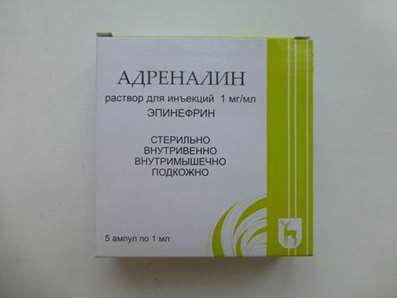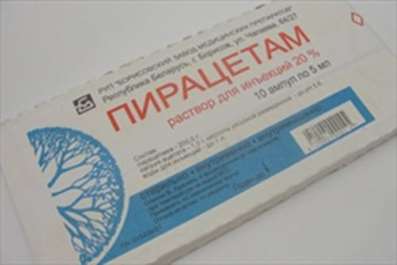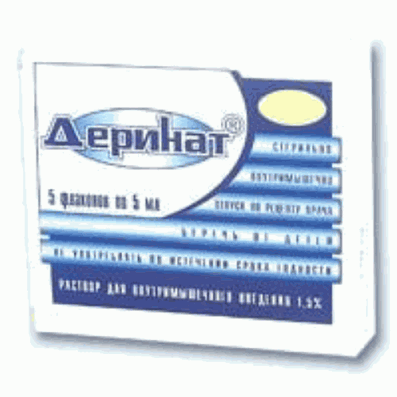Instruction for use: Pyridostigmine bromide (Pyridostigmini bromidum)
I want this, give me price
Chemical name
3 - [[(Dimethylamino) carbonyl] oxy] -1-methylpyridinium bromide
Pharmacological group
M-, n-holinomimetiki, incl. Anticholinesterase agents
Stimulators of gastrointestinal motility, including emetics
Nosological classification (ICD-10)
G70 Myasthenia gravis and other disorders of the neuromuscular synapse
Myasthenic syndrome, Myasthenic syndromes, Myasthenia gravis, Myasthenic syndrome, Severe myasthenia gravis (Myasthenia gravis)
K59.0.0 * Constipation hypo- and atonic
Atonic constipation, Acute functional constipation, Constipation of various etiologies due to hypotension of the gastrointestinal tract and flaccid peristalsis of the large intestine, Constipation of various etiologies, caused by hypotension and sluggish peristalsis of the colon with a change in the nature of nutrition and place of stay, Reduction of the evacuation function of the large intestinem Chronic atonic constipation, Chronic hypotonic constipation, Acute constipation, Preparation of the lower GI tract for endoscopy
K59.8.0 * Atony of the intestine
Atony of the duodenum, Atony of the gastrointestinal tract, Atony of the intestine, Atony of the intestine after operations, Atony of the intestine after childbirth, Atony of the musculature of the gastrointestinal tract, Sluggish peristalsis of the large intestine, Sluggish peristalsis of the colon, Hypotension of the duodenum, Hypotension of the intestine, Hypotension of the large intestine, Hypotonia of the large intestine, Constipation of various etiologies, due to hypotension of the gastrointestinal tract and flaccid peristalsis of the large intestine, Violation of the promotion of intestinal contents, Postoperative atony of the stomach, Postoperative intestinal atony
N31.2 neurogenic bladder weakness, not elsewhere classified
Urinary incontinence in a stressful situation, Atony of bladder, Atony of the bladder (the sphincter) (neurogenic), Impaired function of the sphincter of the bladder, Neurogenic bladder disorders, Neurogenic bladder disorder, Neurogenic bladder, Functional insufficiency of the sphincter of the bladder, Imperative incontinence
R39.1 Other difficulties with micturition
Frequent urination, urinary retention, strangury, Obstructed flow of urine, Violation of urination, Violation of urination, Violation of bladder emptying, Violation of the outflow of urine, Frequent urination, Abnormalities of urination
T88.8 Other specified complications of surgical and therapeutic interventions, not elsewhere classified
Dumping syndrome
Y55.1 Adverse reactions in the therapeutic use of muscle relaxants [skeletal muscle n-cholinoreceptor blockers]
Z100 * CLASS XXII Surgical practice
Abdominal surgery, adenomectomy, Amputation, Coronary angioplasty, Angioplasty of the carotid arteries, Antiseptic skin treatment for wounds, Antiseptic Hand, Appendectomy, atherectomy, Balloon coronary angioplasty, Vaginal hysterectomy, The coronary bypass, Interventions in the vagina and cervix, Interventions on the bladder, Intervention in the mouth, Restoration and reconstructive surgery, Hand hygiene of medical personnel, Gynecologic surgery, Gynecological intervention, Gynecological surgery, Hypovolemic shock during operations, Disinfection of purulent wounds, Disinfection of wounds edges, Diagnostic intervention, Diagnostic procedures, Cervical Diathermocoagulation, Long-surgery, Replacing the fistula catheters, Infection in orthopedic surgery, Artificial heart valve, cystectomy, Short-term outpatient surgery, Short-term operation, Short surgical procedures, Krikotireotomiya, Blood loss during surgery, Bleeding during surgery and in the postoperative period, Kuldotsentez, laser photocoagulation, laser coagulation, retinal laser coagulation, Laparoscopy, Laparoscopy in Gynecology, CSF fistula, Small gynecological operations, Small surgical procedures, Mastectomy and subsequent plastic, mediastinotomy, Microsurgical operations on the ear, Mukogingivalnye operation, suturing, Minor surgery, neurosurgical operation, Immobilization of the eyeball in ophthalmic surgery, testectomy, pancreatectomy, Perikardektomiya, The period of rehabilitation after surgery, The period of, convalescence after surgery, Percutaneous transluminal coronary angioplasty, Pleural thoracentesis, Pneumonia postoperative and posttraumatic, Preparation for surgical procedures, Preparation for surgery, Preparation of the surgeon's hands before surgery, Preparation of the colon for surgical procedures, Postoperative aspiration pneumonia in neurosurgical and thoracic surgery, Postoperative nausea, Postoperative bleeding, postoperative granuloma, postoperative shock, The early postoperative period, myocardial revascularization, Radiectomy, gastric Resection, bowel resection, uterine Resection, liver Resection, enterectomy, Resection of part of the stomach, Reocclusion of the operated vessel, Bonding tissues during surgical procedures, Removal of sutures, Condition after eye surgery, Condition after surgery, Condition after surgery in the nasal cavity, Condition after gastrectomy, Status after resection of the small intestine, Condition after tonsillectomy, Condition after removal of the duodenum, Condition after phlebectomy, Vascular surgery, Splenectomy, Sterilization of surgical instruments, Sterilization of surgical instruments, sternotomy, Dental surgery, Dental intervention in periodontal tissues, strumectomy, Tonsillectomy, Thoracic surgery, total gastrectomy, Transdermal intravascular coronary angioplasty, Transurethral resection, Turbinektomiya, Removal of a tooth, cataract surgery, Removal of cysts, tonsillectomy, Removal of fibroids, Removing the mobile primary teeth, Removing polyps, Removing broken tooth, Removal of the uterus body, Removal of sutures, Urethrotomy, Fistula likvoroprovodyaschih ways, Frontoetmoidogaymorotomiya, Surgical infection, Surgical treatment of chronic limb ulcersm, Surgery, The surgery in the anal area, The surgery on the colon, Surgical practice, The surgical procedure, Surgical interventions, Surgery on the gastrointestinal tract, Surgical procedures on the urinary tract, Surgical procedures on the urinary system, Surgical intervention of the genitourinary system, Surgical procedures on the heart, Surgical manipulation, surgery, Surgery on the veins, Surgical intervention, Vascular surgery, Surgical treatment of thrombosis, cholecystectomy, Partial gastric resection, transabdominal hysterectomy, Percutaneous transluminal coronary angioplasty, Percutaneous transluminal angioplasty, Coronary artery bypass, tooth Extirpation, Extirpation of milk teeth, pulpectomy, pulsative cardiopulmonary bypass, tooth Extraction, teeth Extraction, cataract extraction, Electrocoagulation, endourological intervention, episiotomy, Etmoidotomiya, Complications after tooth extraction
Code CAS
101-26-8
Characteristics
White or almost white crystalline powder with a characteristic pleasant smell. Very easily soluble in water and ethanol, easily soluble in chloroform, almost insoluble in ether, acetone, benzene.
Pharmacology
Pharmacological action - anticholinesterase.
Reversibly inhibits cholinesterase, increases the content of acetylcholine in the area of cholinergic synapses. It improves neuromuscular transmission, increases motility of the gastrointestinal tract, raises the tone of the bladder, bronchi, secretion of exocrine glands, causes bradycardia.
When administered orally, Tmax is 1.5-3 hours, bioavailability is 8-20%, with myasthenia gravis it can drop to 4%. Penetration into the central nervous system is insignificant (due to low solubility in lipids). Partially metabolized in the liver to inactive metabolites. It is excreted mainly by the kidneys in unchanged form and in the form of metabolites, T1 / 2 - 2.5 hours.
Indications
Myasthenia gravis, myasthenic syndrome, atony of the gastrointestinal tract and bladder, incl. Postoperative atony of the intestine, atonic constipation, impaired emptying of the bladder after gynecological operations and childbirth; For the cessation of muscle relaxation during anesthesia.
Contraindications
Hypersensitivity, obstructive intestinal obstruction, obstruction of the urinary tract, increased bronchial muscle tonus (bronchial asthma, chronic obstructive bronchitis), previous or combined use of depolarizing muscle relaxants (eg suxamethonium) due to the possibility of synergy, irit; Spasm of the digestive tract, bile excretory and urinary tract; Myotonia, parkinsonism, thyrotoxicosis.
Restrictions for use
Arterial hypotension, chronic heart failure, acute myocardial infarction, peptic ulcer of stomach and duodenum, bradycardia, diabetes, operations on the digestive tract (see "Application"), parkinsonism, renal insufficiency, liver diseases.
pregnancy and lactation
When pregnancy is possible, if the expected effect of therapy exceeds the potential risk to the fetus.
The action category for fetus by FDA is C.
At the time of treatment, breastfeeding should be discontinued (pyridostigmine bromide penetrates into breast milk).
Side effects
From the nervous system and sensory organs: muscle tremor, muscle spasm, miosis.
From the cardiovascular system and blood (hematopoiesis, hemostasis): bradycardia, lowering blood pressure.
On the part of the respiratory system: increased secretion of bronchial glands.
On the part of the intestine: nausea, vomiting, diarrhea, increased intestinal peristalsis, stomach colic.
Other: skin rashes, excessive sweating, increased tear and salivation, frequent urge to urinate, skin rash.
Interaction
M-holinolitiki, ganglioblokatory, quinidine, procainamide, local anesthetics, tricyclic antidepressants, antiepileptic and antiparkinsonian drugs reduce the effect. Pyridostigmine bromide enhances the effect of derivatives of morphine, barbiturates and depolarizing muscle relaxants. Incompatible with ethanol.
Overdose
Symptoms: dizziness, hypersalivation, increased lachrymation, rhinorrhea, sweating, redness of the skin, difficulty breathing, pronounced miosis, visual impairment, nausea, vomiting, intestinal colic, diarrhea, involuntary withdrawal of urine and feces, fatigue, severe weakness, bronchospasm, swelling Lung, lowering blood pressure down to vascular collapse, bradycardia until cardiac arrest; Sometimes reflex tachycardia; Cholinergic crisis (pronounced or increasing muscle weakness until the onset of muscle paralysis, including paralysis of the respiratory muscles).
Treatment: gastric lavage and the use of activated charcoal. Specific antidote - atropine sulfate (iv slowly in a dose of 1-2 mg), depending on the pulse rate, if necessary, the initial dose is reintroduced after 2-4 hours. It should be ensured that the airways are free, if necessary - ventilation ; Cardiac arrest; It is necessary to control the water-electrolyte balance.
Routes of administration
Inside.
Precautions
It is recommended to combine the time of taking the drug with the period of physical activity of the patient. The lack of an expected response to treatment may result from an overdose.
Patients with liver diseases in the history should regularly monitor its function.
Care should be taken during the work of drivers of vehicles and people whose profession is associated with increased concentration of attention.

 Cart
Cart





